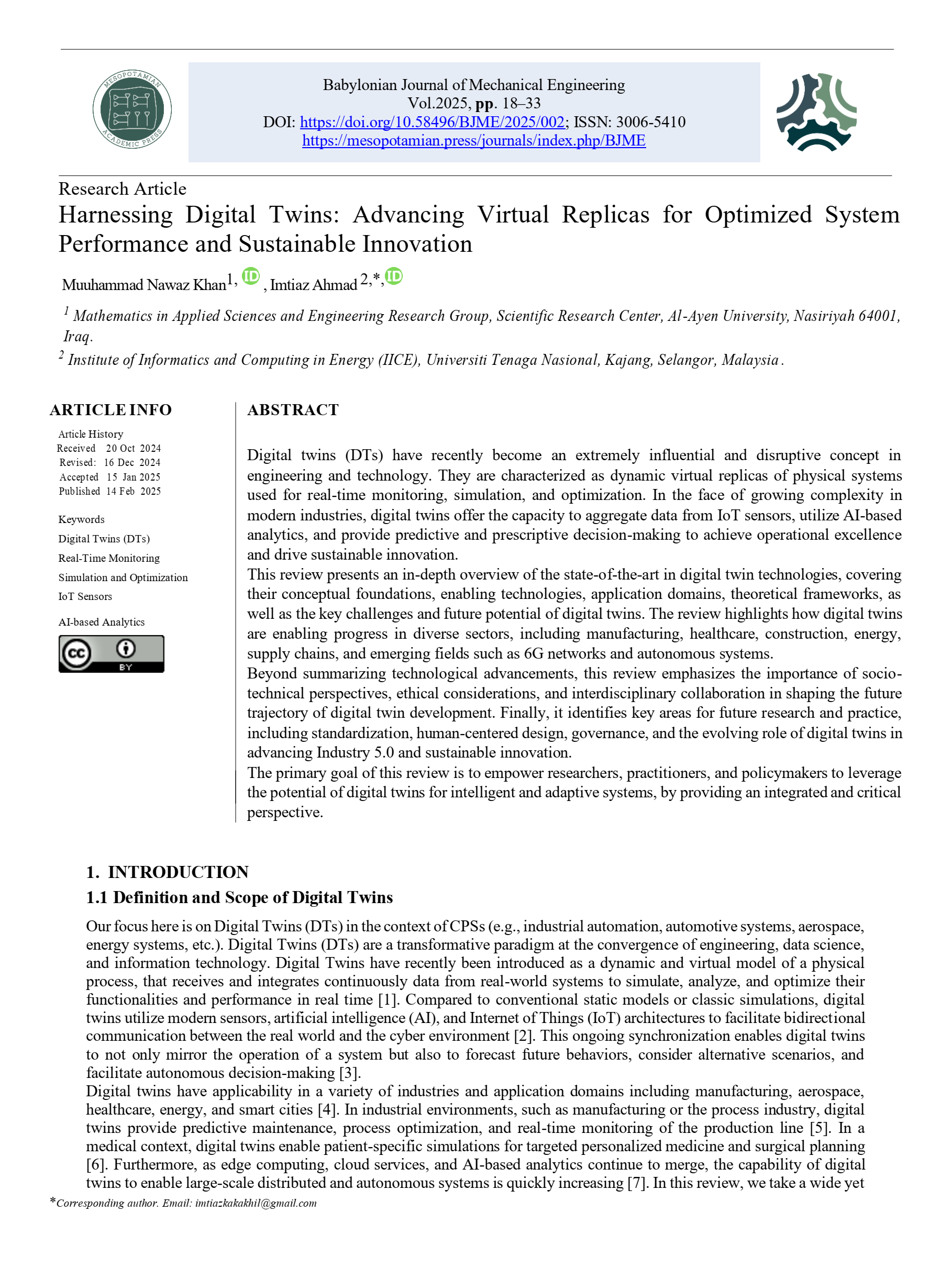Harnessing Digital Twins: Advancing Virtual Replicas for Optimized System Performance and Sustainable Innovation
Main Article Content
Abstract
Digital twins (DTs) have recently become an extremely influential and disruptive concept in engineering and technology. They are characterized as dynamic virtual replicas of physical systems used for real-time monitoring, simulation, and optimization. In the face of growing complexity in modern industries, digital twins offer the capacity to aggregate data from IoT sensors, utilize AI-based analytics, and provide predictive and prescriptive decision-making to achieve operational excellence and drive sustainable innovation.
This review presents an in-depth overview of the state-of-the-art in digital twin technologies, covering their conceptual foundations, enabling technologies, application domains, theoretical frameworks, as well as the key challenges and future potential of digital twins. The review highlights how digital twins are enabling progress in diverse sectors, including manufacturing, healthcare, construction, energy, supply chains, and emerging fields such as 6G networks and autonomous systems.
Beyond summarizing technological advancements, this review emphasizes the importance of socio-technical perspectives, ethical considerations, and interdisciplinary collaboration in shaping the future trajectory of digital twin development. Finally, it identifies key areas for future research and practice, including standardization, human-centered design, governance, and the evolving role of digital twins in advancing Industry 5.0 and sustainable innovation.
The primary goal of this review is to empower researchers, practitioners, and policymakers to leverage the potential of digital twins for intelligent and adaptive systems, by providing an integrated and critical perspective.
Article Details
Issue
Section

This work is licensed under a Creative Commons Attribution 4.0 International License.
